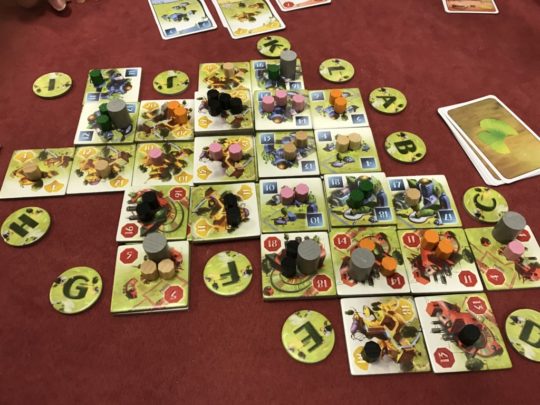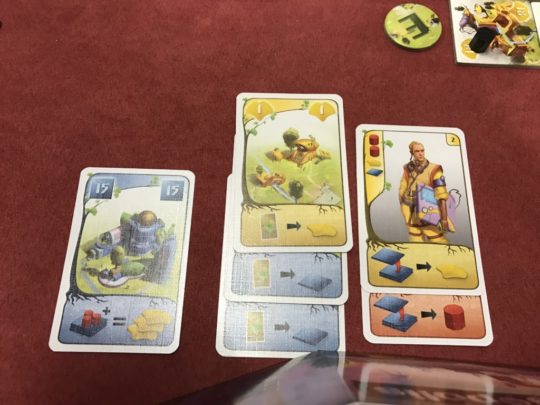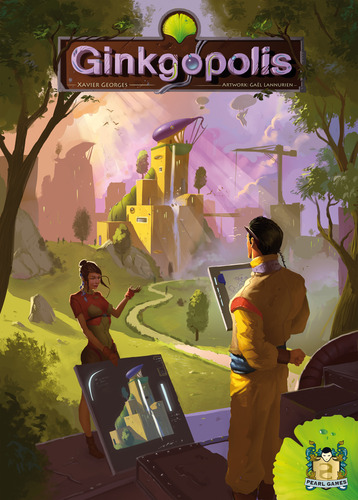“I have a pretty good memory, but memories are time beings, too, like cherry blossoms or ginkgo leaves; for a while they are beautiful, and then they fade and die.”
~ Ruth Ozeki, A Tale for the Time Being
2212: Ginkgo Biloba, the oldest and strongest tree in the world, has become the symbol of a new method for building cities in symbiosis with nature. Humans have exhausted the resources that the Earth offered them, and humanity must now develop cities that maintain a delicate balance between resource production and consumption. Habitable space is scarce, however, and mankind must now face the challenge of building ever upwards. To develop this new type of city, you will gather a team of experts around you, and try to become the best urban planner for Ginkgopolis.
OK, so, this is quite a complex game and the teach wasn’t great… Also, it’s been a couple of weeks since I played it so I’ll do the best I can. 🙂
You’re placing tiles into a grid using cards that you draft. The tiles are in 3 colours; Yellow, Red and Blue which reward you with Victory Points, Resources and more Tiles respectively when placed.
A card can also be used to gain the VPs, Resources and/or tiles printed on the card and discarded instead of using it to place a tile.

If you have a card with a letter token on it you place the tile in place of the Letter token and move the token adjacent to the newly placed tile. This is how the board expands from its starting 3×3 (I think) grid.
Card Play
If you play a card, you place a tile onto the board matching the colour of the card. They go on existing tiles of the same colour… You put your resource tokens on top depending on how high the stack is. Then return resources to the supply if the number of the tile is lower than the one you’re building on top of or if another player already controlled the tile you’re building on.

You also have cards in front of you in the 3 colour piles that are added to as the game goes on. When you play a tile of that colour you get the income/bonus of each card in the stack.
When all of the cards have run out the game ends. You score BIG points for having the most resources on top of groups of adjacent like-coloured tiles. Most points win.
Ginkgopolis Positives
I didn’t explain it well, but the mechanisms work together great and the game is very tactical. Experienced players will have a huge advantage I think.
Interesting card restock system… When a tile is built it gets a grey token, when the deck of cards runs out you add cards matching the numbers on those into the play deck then the grey token is removed. They are shuffled with the discard pile to rebuild the deck. I haven’t seen cards added slowly into a game like this before and I like it.
Excellent engine-building style thing that rivals Saint Petersburg.
It’s quite pretty.
Ginkgopolis Negatives
No theme. Usually, I don’t care but it’s SO abstract it’s JUST cards, tiles and tokens.
Summary
Ginkgopolis is not bad… but would be an excellent game if re-themed to help it make sense.
Jesta ThaRogue



Leave a Reply